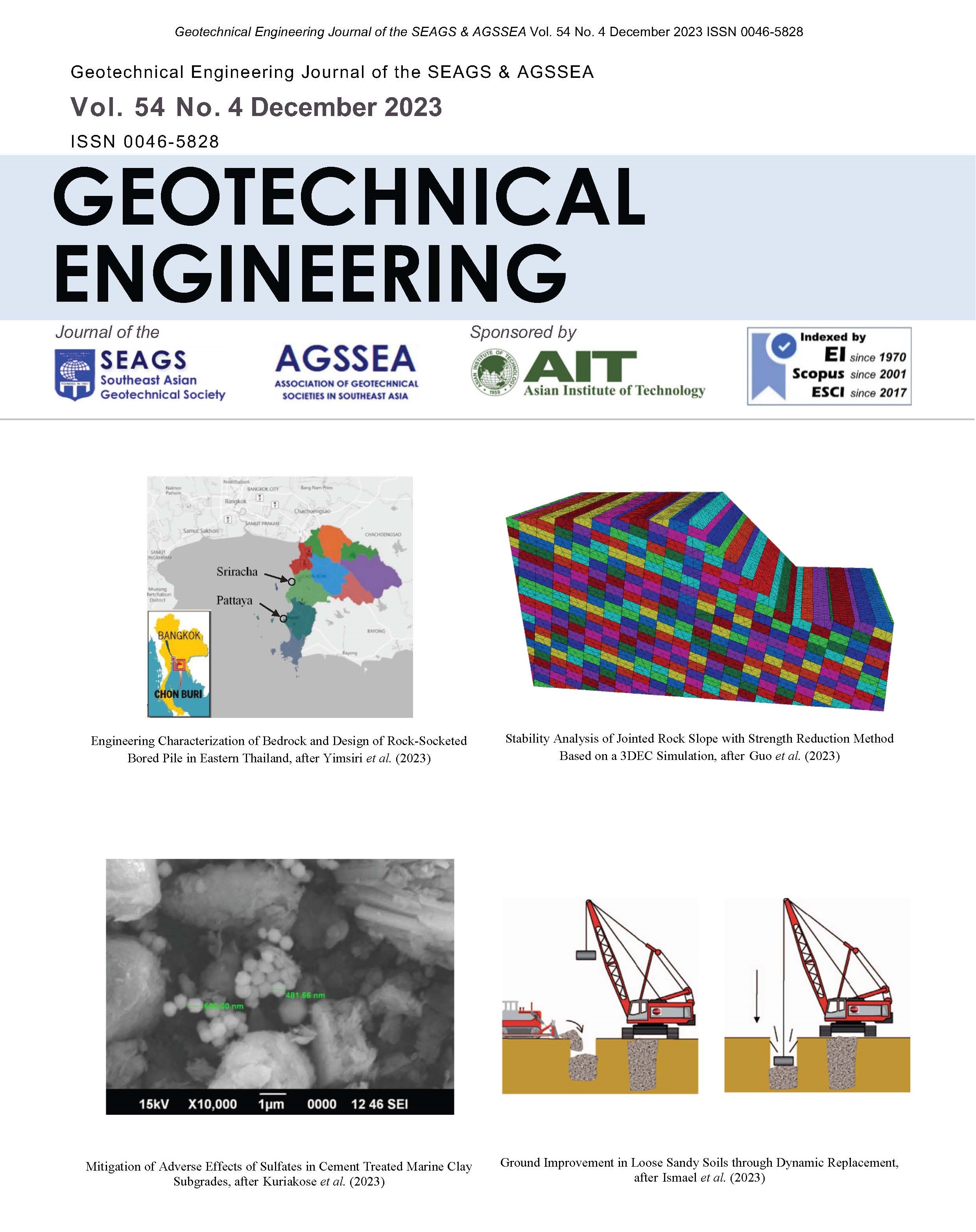The Unconfined compressive strength of weakly cemented compacted sand under different loads The effect of the addition of cement on the evolution of the unconfined compressive strength and the elastic modulus under static and cyclic loading.
Main Article Content
Abstract
This experimental study investigated the behavior of cement-stabilized dune sand under static and cyclic loading. Unconfined compression tests (UCS) carried out at rates of loading 0.05mm/min and 0.1mm/min. while unconfined displacement controlled repeated cyclic loading tests were performed at a frequency of 0.002 Hz .The tests were conducted on samples cured for 7 and 28 days with a cement content of 0, 2, and 4 %. The study investigated the effects of cement content, rate of loading, and curing time, frequency, number of cycles on the mechanical behavior of the loaded soil. Under static loading, it was observed that the low rate of loading, the increase in curing period, and the increase in cement content contribute to the increase in the unconfined compression strength (UCS). The latter phenomenon may explain the considerable increase in the modulus of elasticity (E). The sample with 4 % cement content, 28 days of age, and loaded at a rate of 0.05 mm/min presented a UCS of about 29 % higher than that of a similar sample tested at a loading rate of 0.1. mm/min. It was also observed that at a low loading rate, the soil-cement composite becomes more compact and thus exhibits a more dilatant behavior which results in an increase in the modulus of elasticity. The results obtained under cyclic loading have shown that with a low frequency and increased cement content, along with an increase in the number of cycles and curing time, both the strength and elastic modulus increase.
Article Details

This work is licensed under a Creative Commons Attribution-NonCommercial-NoDerivatives 4.0 International License.
Copyright © 2019 Association of Geotechnical Societies in Southeast Asia (AGSSEA) - Southeast Asian Geotechnical Society (SEAGS).


